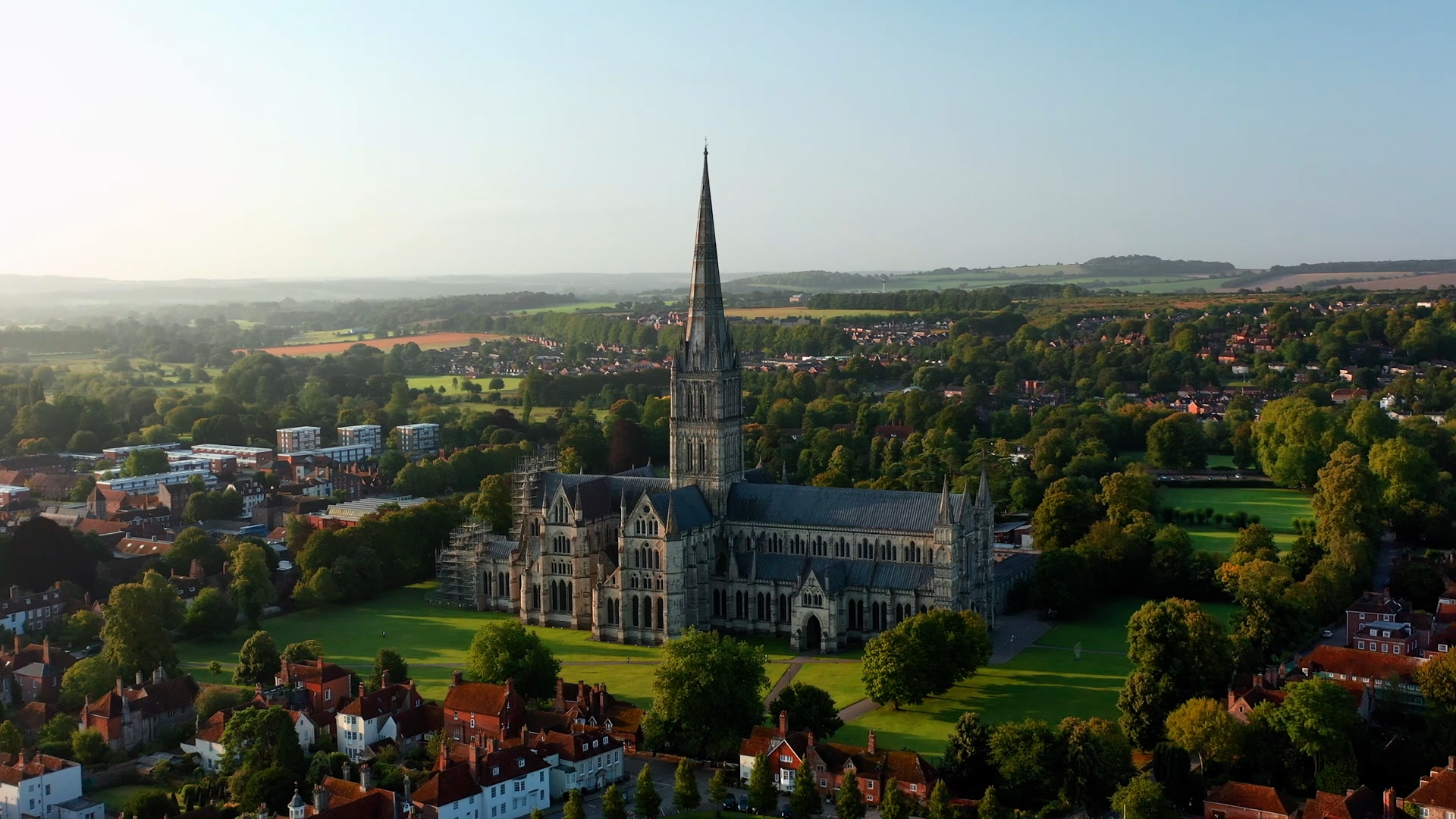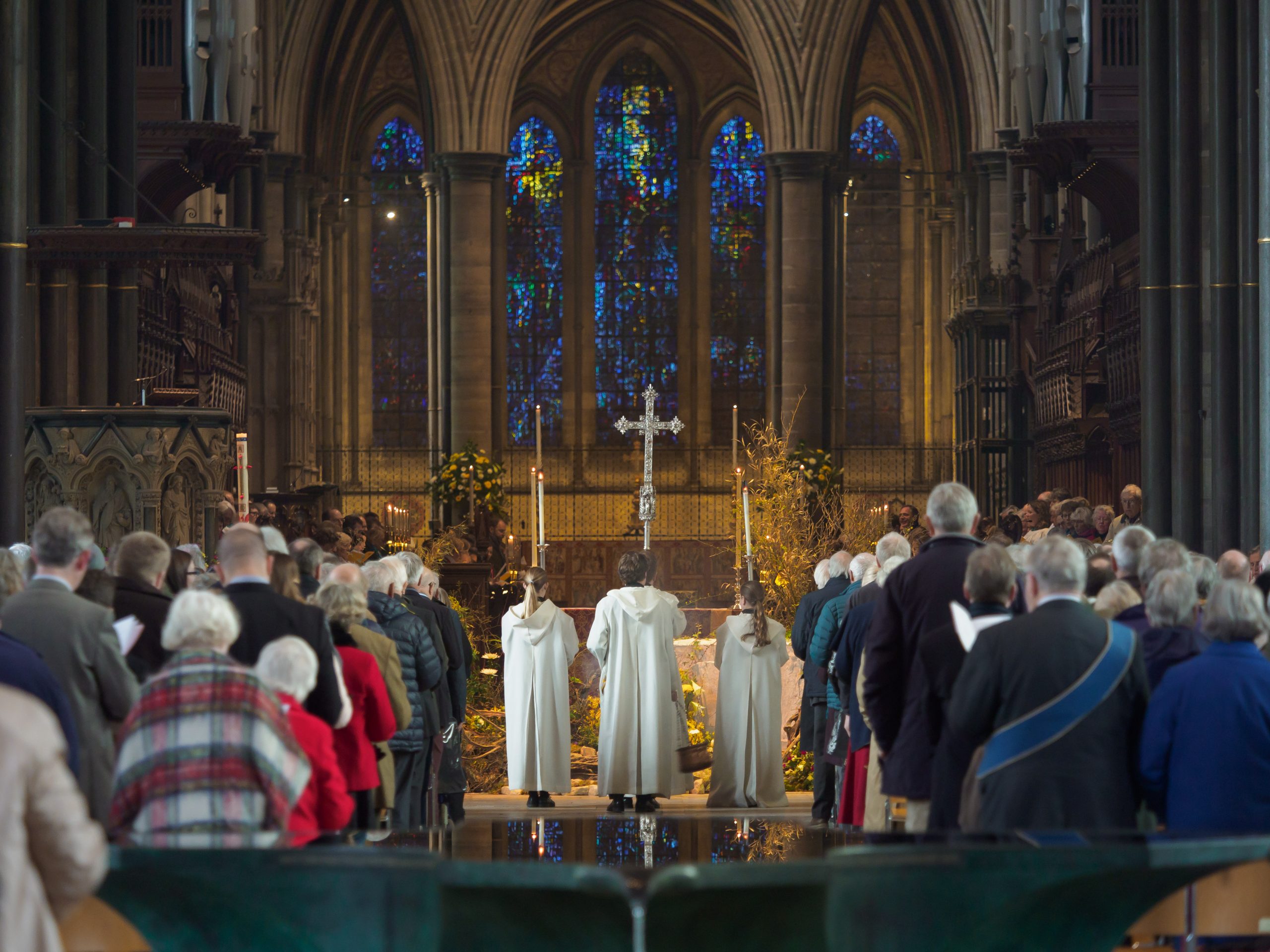Study this world. Sense its need. Speak to its condition.

A sermon by The Very Reverend Nicholas Papadopulos, Dean of Salisbury.
Sunday 08 January, The Baptism of Christ, 10:30 am Eucharist.
No pilgrimage to the Holy Lands of Israel and Palestine is complete without a visit to the traditional site of the Baptism of Jesus, where pilgrims customarily renew their baptismal vows and are sprinkled with water from the River Jordan. The pilgrims whom I accompanied there in April last year will probably remember that the water level of the Jordan was higher than it has been for some time. Consequently, when I sprinkled them, it was not with clear, fresh river water but with cloying brown mud. Those dressed in baptismal white linen had particular cause for complaint…
The site is located at Qasr al-Yahud, in the West Bank, which has been under occupation by Israel since 1967. Two features of the site routinely make an impression on contemporary pilgrims. The first is that the route to it was, until very recently, through a minefield. On either side of the road to the riverbank there are barbed wire fences and skull-and-crossbones signage, a legacy of the Six-Day-War. The second is that the river is an international boundary. At the baptism site it is only a few metres wide, and on the other side a Jordanian flag flutters and a Jordanian sentry sits. Of course, these were not features of the place that John and Jesus knew, but they are nonetheless a stimulation to reflection on today’s feast.
The route to baptism is through a minefield. We know nothing of the actual route taken by Jesus to his baptism, but Matthew is clear that he comes from Galilee to the Jordan. Galilee was then a client state of Rome, ruled by Herod Antipas. No Roman troops were stationed there: Herod paid an annual tribute to the Emperor in return for his protection, and, inevitably, Hellenistic culture influenced the life of the region. Herod built the city of Sepphoris, close to Nazareth, where Jesus grew up: it’s conceivable that he and Joseph worked on its construction. The elaborate mosaics of Sepphoris are not rooted in Jewish tradition; they are closer to the villas and palaces of Roman Italy and classical Greece. It’s not difficult to imagine the impact of this new, foreign, cosmopolitan style on the staid rhythms of the surrounding villages. It’s not difficult to imagine that John’s call for God’s people to repent would have found a ready audience among devout Jews mindful of their ancient heritage. It’s not difficult, perhaps, to imagine an idealistic young carpenter laying down his tools and going out to join the new movement calling for renewed faithfulness to God’s covenant. As he sets out from Nazareth he will have walked through his own minefield of unanswered questions, competing loyalties, and deeply held allegiances.
The place of baptism is a border. The Gospel verse which follows on from this morning’s reading is as follows. “Then Jesus was led up by the Spirit into the wilderness to be tempted by the devil”. We are only a fortnight on from our celebration of Christmas, but that fortnight comprises three decades of Jesus’s life, three decades of which we know nothing. Today we celebrate his baptism, recorded by all four Evangelists, its historicity challenged by no serious historian. It is his baptism which prompts his sojourn in the wilderness; it is his sojourn in the wilderness which prompts his ministry of teaching and healing; and it is his ministry which prompts the events of Holy Week and Easter. So a border, certainly: Jesus comes up out of the water and embarks upon a life which few other Galilean carpenters could have considered. What lies on one side of his baptism is not the same as what lies beyond it.
The route to baptism is through a minefield, and the place of baptism is a border: on this feast day you might wish to reflect on that proposition, and to consider how you would modify the metaphor to match better the experience you have had of the life of faith. But at the beginning of a new calendar year, I hope you will allow me to use the metaphor to pose some questions of our common life.
A few years back, Bishop Nick Holtam shared with the clergy of the Diocese a piece of advice for ministry that he had once received. It was this: “Study this world. Sense its need. Speak to its condition”. Study this world. Sense its need. Speak to its condition. It’s good advice, not least because it’s modelled by Jesus himself, and modelled in the events that we celebrate today. It is arguably his study of the world that leads Jesus to John at the water’s edge – his Galilean sense of the increasing faithlessness of God’s people and God’s land. It is arguably his sense of the world’s need that draws him down into the Jordan – his sense that Israel must turn away from self and turn to God, a sense so strong that he dismisses John’s hesitation and is baptized alongside his compatriots. And it is unarguable that when he returns from the wilderness proclaiming the Kingdom of Heaven, healing the sick, and driving out demons, he is speaking to the world’s condition.
Now: pilgrims come to Salisbury Cathedral, just as they come to Qasr al-Yahud, and they come to a place that you and I make together. The combined efforts of the chafer bugs and the crows mean that we have mud to rival the Jordan – but they don’t drive through a minefield. The Close is encircled by a wall – but it is not as yet a national boundary. But features of our site and the behaviours of those of us who inhabit it will make an impression on all of them, just as the minefield and the Jordanian flag do on those who drive down into the Jordan valley.
So: my question is this. Have we who work here, live here, worship here and volunteer here – have we studied the world? Have we sensed its need? Does this place that we are making speak to the condition of being human at the start of 2023?
A few seconds on Google confirms four bare statistics. It has been concluded that 2022 was the UK’s warmest year on record. It has been estimated that the number of people living in absolute poverty in the UK will rise by 3 million in the years 2020 – 2023. It has been calculated that 20% of young people living in the UK have a mental health disorder. And it has been recorded by the 2021 Census that the number of UK respondents identifying as Christian is less than 50%. If a place and a community fail to recognize these realities then they fail. They are a place and a community that speaks to itself, or to some fantasy version of the world in which it is set.
Minefields aren’t necessarily surrounded by barbed wire and by skull-and-crossbones signage; the unanswered questions, competing loyalties, and deeply held allegiances which the young carpenter faced as he walked from Galilee are faced by many as they enter the Close. How does this place help all those who enter it, for whatever purpose, navigate a minefield in which climate change, poverty, mental ill health and religious illiteracy are just some of the unexploded bombs?
And borders aren’t necessarily marked by flags and sentries, by different currencies and foreign tongues. What lies on one side of a border is not the same as what lies beyond it, but the difference may be subtle and elusive. How does this place help those who come here to leave behind what they need to leave behind? How does it help them to begin again? How does it help them find peace and liberty in what lies ahead?
Happy New Year, everyone.




